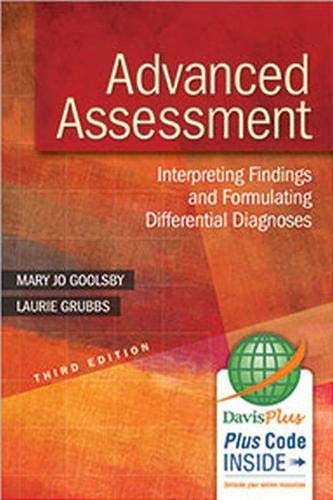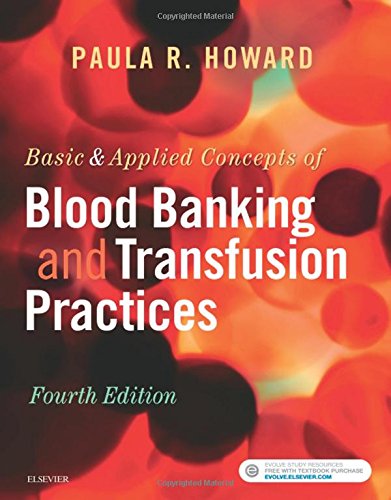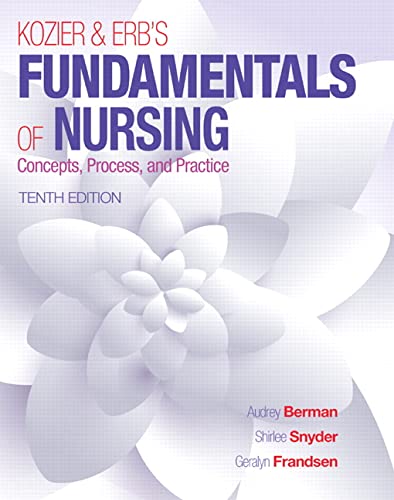Test Bank Leading and Managing in Canadian Nursing 2nd Edition Yoder Wise
Test Bank for Leading and Managing in Canadian Nursing 2nd Edition by Yoder Wise
Leading and Managing in Canadian Nursing 2nd Edition by Yoder Wise – Test bank
Leading and Managing in Canadian Nursing 2nd Edition
Leading and Managing in Canadian Nursing
Chapter 01: Leading, Managing, and Following
Waddell/Walton: Yoder-Wise’s Leading and Managing in Canadian Nursing, Second
Edition
MULTIPLE CHOICE
1. A nurse manager of a 20-bed medical unit finds that 80% of the patients are older adults. She
is asked to assess and adapt the unit to better meet the unique needs of older adult patients.
According to complexity principles, what would be the best approach to take in making this
change?
a. Leverage the hierarchical management position to get unit staff involved in
assessment and planning.
b. Engage involved staff at all levels in the decision-making process.
c. Focus the assessment on the unit, and omit the hospital and community
environment.
d. Hire a geriatric specialist to oversee and control the project.
ANS: B
Complexity theory suggests that systems interact and adapt and that decision making occurs
throughout the systems, as opposed to being held in a hierarchy. In complexity theory,
everybody’s opinion counts; therefore, all levels of staff would be involved in decision
making.
DIF: Cognitive Level: Apply REF: Page 14
TOP: Nursing Process: Implementation
2. A unit manager of a 25-bed medical/surgical area receives a phone call from a nurse who has
called in sick five times in the past month. He tells the manager that he very much wants to
come to work when scheduled, but must often care for his wife, who is undergoing treatment
for breast cancer. In the practice of a strengths-based nursing leader, what would be the best
approach to satisfying the needs of this nurse, other staff, and patients?
a. Line up agency nurses who can be called in to work on short notice.
b. Place the nurse on unpaid leave for the remainder of his wife’s treatment.
c. Sympathize with the nurse’s dilemma and let the charge nurse know that this nurse
may be calling in frequently in the future.
d. Work with the nurse, staffing office, and other nurses to arrange his scheduled
days off around his wife’s treatments.
ANS: D
Placing the nurse on unpaid leave may threaten physiologic needs and demotivate the nurse.
Unsatisfactory coverage of shifts on short notice could affect patient care and threaten staff
members’ sense of competence. Strengths-based nurse leaders honour the uniqueness of
individuals, teams, systems, and organizations; therefore arranging the schedule around the
wife’s needs would result in a win-win situation, also creating a work environment that
promotes the health of all the nurses and facilitates their development.
DIF: Cognitive Level: Analyze REF: Page 6
TOP: Nursing Process: Implementation
Yoder-Wise’s Leading and Managing in Canadian Nursing 2nd Edition Yoder-Wise Test Bank
3. A grievance brought by a staff nurse against the unit manager requires mediation. At the first
mediation session, the staff nurse repeatedly calls the unit manager’s actions unfair, and the
unit manager continues to reiterate the reasons for the actions. What would be the best course
of action at this time?
a. Send the two disputants away to reach their own resolution.
b. Involve another staff nurse in the discussion so as to clarify issues.
c. Ask each party to examine her own motives and issues in the conflict.
d. Continue to listen as the parties repeat their thoughts and feelings about the
conflict.
ANS: C
Nurses and leaders must assess each situation as unique, determining appropriate actions
accordingly. Leaders must adapt their styles to complement specific issues being faced, such
as conflict. Examining motives and issues for the conflict in perceptions promotes equal
representation of each point of view.
DIF: Cognitive Level: Apply REF: Pages 11–13
TOP: Nursing Process: Implementation
4. Shortly after being informed of fetal death, a labouring woman asks why she is not able to
hear her baby’s heartbeat on the monitor anymore. Although the monitor volume had been
turned off so that the patient would be able to sleep between contractions, the nurse responded
that there was no heartbeat to hear because the baby had died in utero; then the nurse asked
whether the patient would like to talk about how she was feeling. This response demonstrates:
a. Lack of empathy.
b. Ethical leadership.
c. Complexity science.
d. A coercive relationship.
ANS: B
Ethical leadership is based on a willingness to identify and act on complex problems in an
ethical manner. Leadership can be misused when coercive relationships form, and information
and true goals are withheld.
DIF: Cognitive Level: Analyze REF: Page 7
TOP: Nursing Process: Implementation
5. The manager of a surgical area envisions a future that requires the addition of registered nurse
(RN) assistants or unlicensed persons to feed, bathe, and walk patients. The RNs on the staff
have always practiced in a primary nursing-delivery system and are very resistant to this idea.
The best initial strategy in this situation would include:
a. Exploring the values of the RNs in relation to this change.
b. Leaving the RNs alone for a time so they can think about the change before they
are approached again.
c. Dropping the idea and trying for the change in another year or so.
d. Hiring the assistants and allowing the RNs to see what good additions they are.
ANS: A
Yoder-Wise’s Leading and Managing in Canadian Nursing 2nd Edition Yoder-Wise Test Bank
Leadership involves engaged decision making around a vision that is based on evidence and
tacit knowledge. Influencing others requires emotional intelligence in domains such as
empathy and handling relationships.
DIF: Cognitive Level: Apply REF: Page 5
TOP: Nursing Process: Implementation
6. As the charge nurse on the night shift in a small long-term care facility, you have found that
there is little turnover among your licensed practical nurse and nursing assistant (NA) staff
members, but they are not very motivated to work beyond their job descriptions. Which of the
following strategies might motivate the staff and lead to greater job satisfaction?
a. Ask the director of nursing to offer higher wages and bonuses for extra work for
the night licensed practical nurses and NAs.
b. Allow the licensed practical nurses and NAs greater decision-making power within
the scope of their positions in the institution.
c. Help the licensed practical nurses and NAs with their work, whenever possible.
d. Ask the director of nursing to increase job security for night staff by having them
sign contracts that guarantee work.
ANS: B
A nurse leader should provide an environment conducive to opinion sharing that involves staff
in decision making at all levels. This approach is shown to increase job satisfaction. Decision
making and the corresponding actions taken are core tasks performed in engagement with
coworkers.
DIF: Cognitive Level: Apply REF: Page 7
TOP: Nursing Process: ImplemNentRationI
7. As the nurse manager, you want to increase motivation by providing motivating factors.
Which action would you select?
a. Collaborate with the human resources/personnel department to develop on-site
daycare services.
b. Provide a hierarchical organizational structure.
c. Implement a model of shared governance.
d. Promote the development of a flexible benefits package.
ANS: C
Complexity theory suggests that systems interact and adapt and that decision making occurs
throughout systems, as opposed to being made unilaterally by different levels of the
organizational hierarchy. In complexity theory, every person’s opinion counts, and therefore
all levels of staff would be involved in decision making. This principle underlies shared
governance. Shared governance is an example of nurse decision making in which nurses at
different organizational levels engage in shaping policy and practices.
DIF: Cognitive Level: Apply REF: Page 5
TOP: Nursing Process: Implementation
8. A charge nurse on a busy 40-bed medical/surgical unit is approached by a patient’s son, who
begins to complain loudly about the quality of care his mother is receiving. His behaviour is
so disruptive that it is overheard by staff, physicians, and other visitors. The family member
rejects any attempt to intervene therapeutically to resolve the issue. He leaves the unit
abruptly, and the nurse is left feeling frustrated. Which behaviour by the charge nurse best
illustrates refined leadership skills in an emotionally intelligent practitioner?
a. Reflection to obtain insight into how the situation could be handled differently in
the future
b. Trying to catch up with the angry family member to resolve the concern
c. Discussing the concern with the patient after the family member has left
d. Notifying nursing administration of the situation
ANS: A
Emotional intelligence is closely aligned with individuals’ capacity to know themselves and
others. Reflecting to obtain insight and being able to “step” outside the situation to envision
the context of what is happening is an example of the actions of an emotionally intelligent
practitioner.
DIF: Cognitive Level: Apply REF: Page 8
TOP: Nursing Process: Implementation












